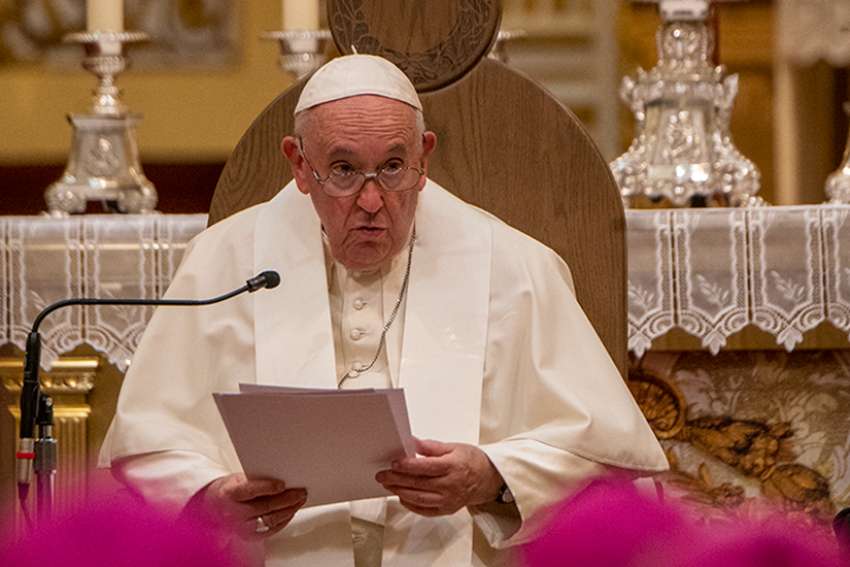Almost every media outlet gave intense coverage to the Pope’s visit. The Toronto Star described the Pope’s visit one “to engage Indigenous Peoples across Canada.” Several photos were printed in our newspapers showing the Pope surrounded by Indigenous Peoples, their leaders and survivors of the Residential School system. The day after his arrival, the Pope visited a cemetery at the site of the former Ermineskin Indian Residential School in Maskwacis in Alberta. He apologized to the Indigenous Peoples saying: “In the face of this deplorable evil, the Church kneels before God and implores His forgiveness.”
He added, “I am deeply sorry.” Evelyn Korkmaz, a survivor of the St. Anne’s Indian Residential School in Ontario spoke to the Toronto Star, describing the Pope’s apology as: “Part of me is rejoiced. Part of me is sad. Part of me is numb. I am glad I lived long enough to have witnessed this apology.” As part of his “penitential pilgrimage,” Pope Francis met with the Indigenous Peoples to hear about difficult and painful experiences from the survivors of the Residential School system. He came to learn about their cultures, problems and their suffering.
So, as Roman Catholics living in Canada, what did the Pope’s visit mean to us? We might have wondered how the Pope’s visit would play out. We saw the Pope’s actions during his visit as an important and necessary step in the process for reconciliation, healing and peace with the Indigenous Peoples. We hope and pray that the Pope’s visit will continue the reconciliation between the Church and the Indigenous Peoples.
Pope Francis’ visit to preach about reconciliation, peace and healing signaled his ministry and ours as being sent “to bring good news to the oppressed, to bind the brokenhearted, to proclaim liberty to the captives and release to the prisoners” (Isaiah 61: 1).
As Roman Catholics, we can describe Pope Francis’ visit as a visit of inspiration and hope. As the Truth and Reconciliation Commission reminds us, “reconciliation is not about ‘closing a sad chapter of Canada’s past,’ but opening new healing pathways of reconciliation that are forged in truth and justice.”
The Pope has visited our country in a special way to spend some time with our Indigenous brothers and sisters in a spirit of reconciliation. The Pope came to encourage reconciliation in Canada. It is now our responsibility to respond.
Pope Francis’ visit also affirmed that religion can transcend cultures. The Pope spoke to peoples in different places and of different cultures. He was also given different gifts from the Indigenous Peoples. The Pope’s visit reminds us that we can take religious faith into different cultures. Yet, the faith itself does not change even though it may look different from one culture to another.
The Pope’s visit challenges us to reflect on how we can foster right relationships with each other. Through the intercession of St Joseph the Patron Saint of Canada and St. Kateri Tekakwitha, a saint from the Mohawk of Kahnawake, may God “Grant that [we] the faithful of the Church, looking into the signs of the times by the light of faith, may constantly devote [ourselves] to the service of the Gospel.
Keep us attentive to the needs of all that, sharing their grief and pain, their joy and hope, we may faithfully bring them the good news of salvation and go forward with them along the way of salvation of [God’s} Kingdom” (Eucharistic Prayer for Mass For Various Needs III).
(Fr. Yaw Acheampong is pastor of Our Lady of Peace in Etobicoke.)


